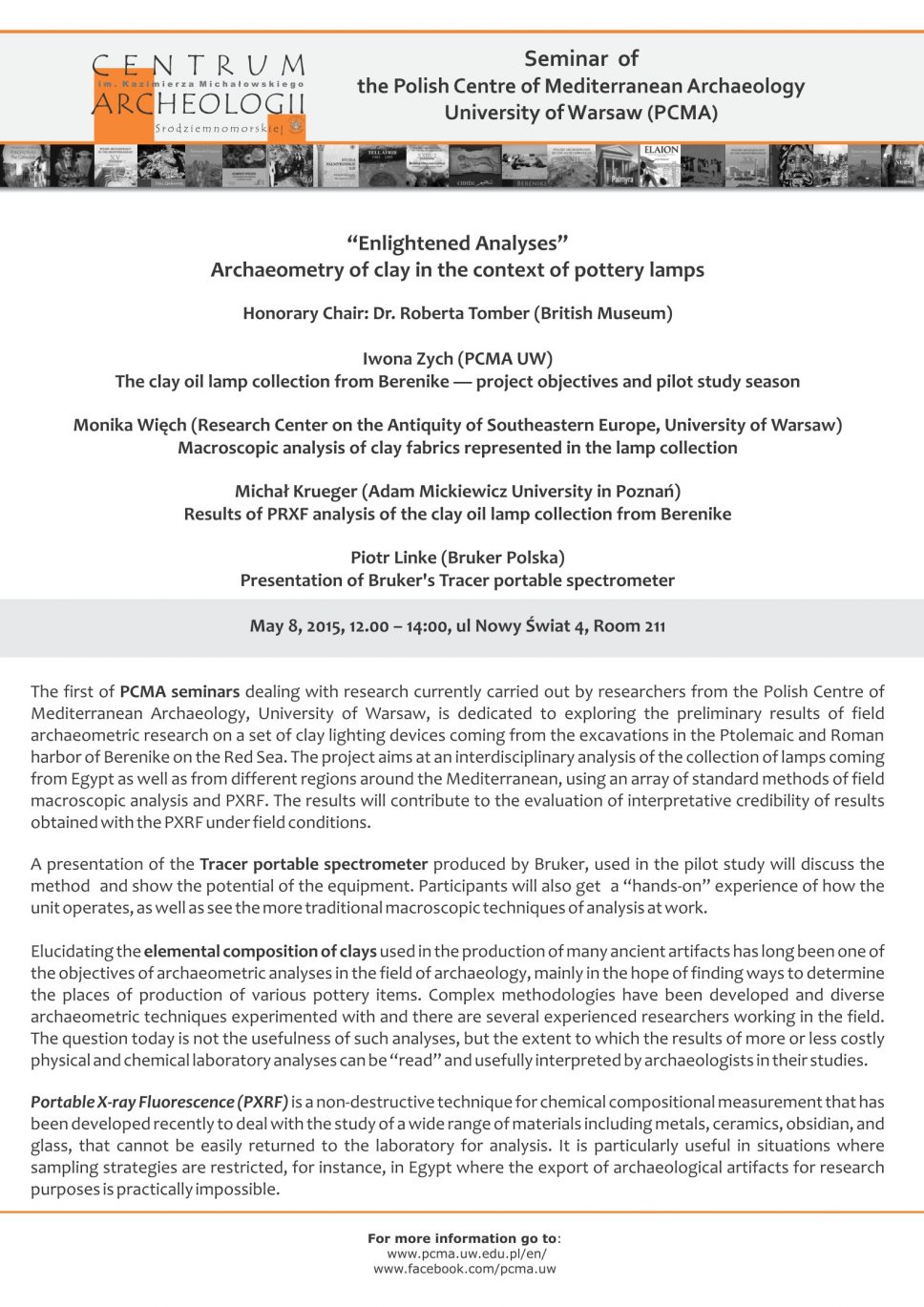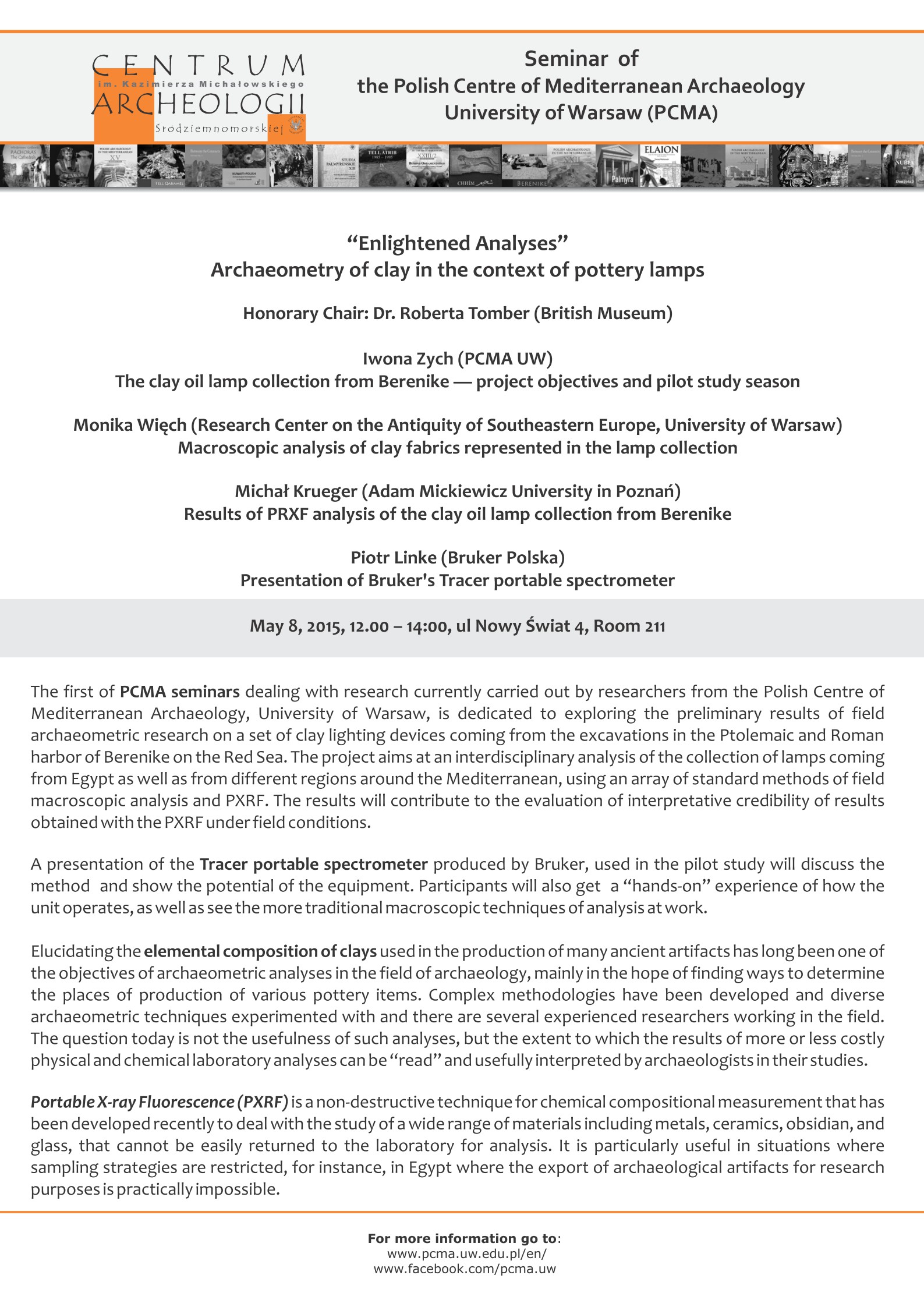The first of PCMA seminars dealing with research currently carried out by researchers from the Polish Centre of Mediterranean Archaeology, University of Warsaw, is dedicated to exploring the preliminary results of field archaeometric research on a set of clay lighting devices coming from the excavations in the Ptolemaic and Roman harbor of Berenike on the Red Sea. The project aims at an interdisciplinary analysis of the collection of lamps coming from Egypt as well as from different regions around the Mediterranean, using an array of standard methods of field macroscopic analysis and PXRF. The results will contribute to the evaluation of interpretative credibility of results obtained with the PXRF under field conditions.
A presentation of the Tracer portable spectrometer produced by Bruker, used in the pilot study will discuss the method and show the potential of the equipment. Participants will also get a “hands-on” experience of how the unit operates, as well as see the more traditional macroscopic techniques of analysis at work.
“Enlightened Analyses”
Archaeometry of clay in the context of pottery lamps
May 8, 2015, 12.00–14:00, ul Nowy Świat 4, Room 211
Honorary Chair: Dr. Roberta Tomber (British Museum)
Program
Iwona Zych (PCMA UW)
The clay oil lamp collection from Berenike — project objectives and pilot study season
Monika Więch (Research Center on the Antiquity of Southeastern Europe, University of Warsaw)
Macroscopic analysis of clay fabrics represented in the lamp collection
Michał Krueger (Adam Mickiewicz University in Poznań)
Results of PRXF analysis of the clay oil lamp collection from Berenike
Piotr Linke (Bruker Polska)
Presentation of Bruker’s Tracer portable spectrometer
Elucidating the elemental composition of clays used in the production of many ancient artifacts has long been one of the objectives of archaeometric analyses in the field of archaeology, mainly in the hope of finding ways to determine the places of production of various pottery items. Complex methodologies have been developed and diverse archaeometric techniques experimented with and there are several experienced researchers working in the field. The question today is not the usefulness of such analyses, but the extent to which the results of more or less costly physical and chemical laboratory analyses can be “read” and usefully interpreted by archaeologists in their studies.
Portable X-ray Fluorescence (PXRF) is a non-destructive technique for chemical compositional measurement that has been developed recently to deal with the study of a wide range of materials including metals, ceramics, obsidian, and glass, that cannot be easily returned to the laboratory for analysis. It is particularly useful in situations where sampling strategies are restricted, for instance, in Egypt where the export of archaeological artifacts for research purposes is practically impossible.


